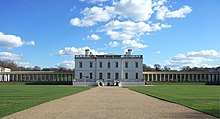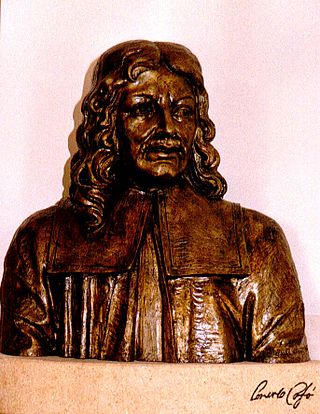Contents
This article needs additional citations for verification .(July 2012) |
| |||
|---|---|---|---|
| Buildings and structures +... |
| 1620s . 1630s in architecture . 1640s |
| Architecture timeline |
This article needs additional citations for verification .(July 2012) |
| |||
|---|---|---|---|
| Buildings and structures +... |
| 1620s . 1630s in architecture . 1640s |
| Architecture timeline |



Inigo Jones was the first significant architect in England in the early modern period, and the first to employ Vitruvian rules of proportion and symmetry in his buildings. As the most notable architect in England, Jones was the first person to introduce the classical architecture of Rome and the Italian Renaissance to Britain. He left his mark on London by his design of single buildings, such as the Queen's House which is the first building in England designed in a pure classical style, and the Banqueting House, Whitehall, as well as the layout for Covent Garden square which became a model for future developments in the West End. He made major contributions to stage design by his work as a theatrical designer for several dozen masques, most by royal command and many in collaboration with Ben Jonson.

Baroque architecture is a highly decorative and theatrical style which appeared in Italy in the early 17th century and gradually spread across Europe. It was originally introduced by the Catholic Church, particularly by the Jesuits, as a means to combat the Reformation and the Protestant church with a new architecture that inspired surprise and awe. It reached its peak in the High Baroque (1625–1675), when it was used in churches and palaces in Italy, Spain, Portugal, France, Bavaria and Austria. In the Late Baroque period (1675–1750), it reached as far as Russia, the Ottoman Empire and the Spanish and Portuguese colonies in Latin America. In about 1730, an even more elaborately decorative variant called Rococo appeared and flourished in Central Europe.

Pietro Paolo Floriani was an Italian engineer and architect who designed military and theatrical buildings.
The year 1700 in architecture involved some significant events.
Events from the year 1575 in art.
The year 1703 in architecture involved some significant architectural events and new buildings.
Events from the year 1700 in art.
Events from the year 1580 in art.
Events from the year 1710 in art.
Events from the year 1709 in art.
Events from the year 1696 in art.
Events from the year 1684 in art.
Events from the 1630s in England.

Lorenzo Gafà (1639–1703) was a Maltese Baroque architect and sculptor. He designed many churches in the Maltese Islands, including St. Paul's Cathedral in Mdina and the Cathedral of the Assumption in Victoria, Gozo. He was the younger brother of the sculptor Melchiorre Cafà.
Events from the year 1584 in art.
Benedetto Landi (1578–1638) was a Catholic prelate who served as Bishop of Fossombrone (1628–1632).
Francesco Buonamici (1596–1677) was an Italian Baroque architect, painter and engraver who was active in Lucca, Malta, Sicily and Rome during the 17th century. He played a significant role in the introduction of Baroque in Malta.